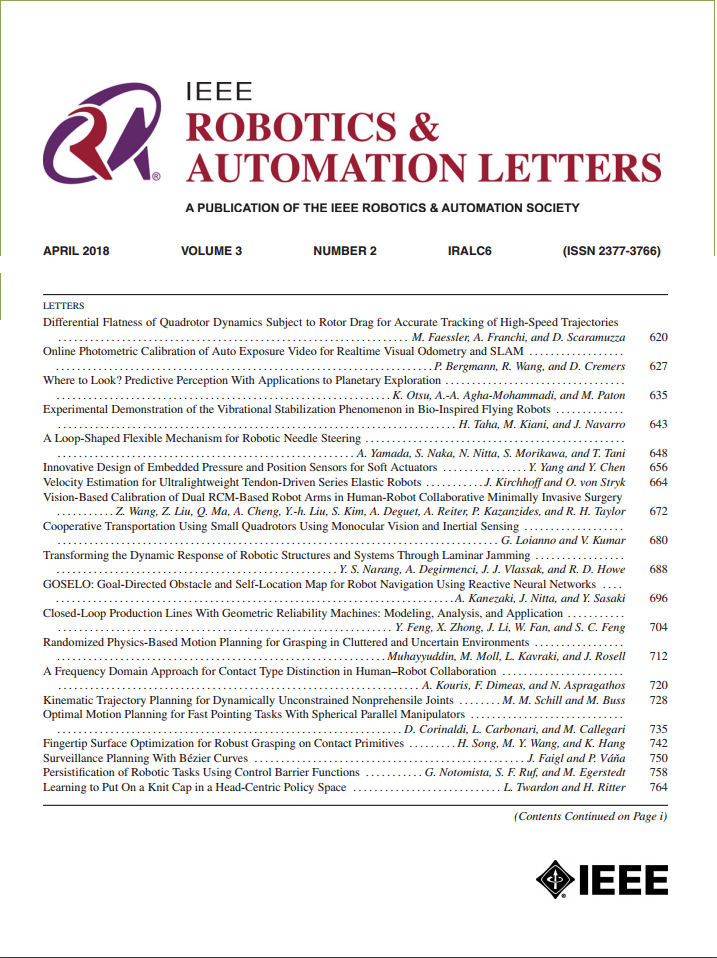A Multimodal Dual-Segment Soft Robot With Ground-to-Ceiling Transition
IF 5.3
2区 计算机科学
Q2 ROBOTICS
引用次数: 0
Abstract
Although various soft robots with remarkable mobility have been developed, enabling a single robot to achieve multi-terrain locomotion with transitions across ground, vertical walls, and ceilings remains a formidable challenge. This letter presents a multimodal dual-segment soft robot capable of omnidirectional terrestrial locomotion, vertical climbing and ceiling crawling, and smooth inter-surface transitioning. The robot's wall and ceiling locomotion ability is realized through improved segment design featuring lightweight construction, enhanced deformability and load capacity, whereas its transitional capability is facilitated by coordinated dual-segmental gaits and compensation of gravity-induced deformation. Through cross-sectional improvement, the redesigned segment demonstrates enhanced bending capability with a maximum bending angle exceeding 180具有从地到顶过渡的多模态双分段软机器人
尽管已经开发出各种具有卓越机动性的软体机器人,但使单个机器人能够实现跨地面,垂直墙壁和天花板的多地形移动仍然是一个巨大的挑战。本文介绍了一种多模态双节段软机器人,该机器人具有全向地面运动、垂直爬升和天花板爬行、表面间平滑过渡的能力。该机器人通过改进的节段设计实现了墙体和天花板的移动能力,其特点是结构轻量化,增强了变形能力和承载能力,而双节段步态协调和重力变形补偿则促进了机器人的过渡能力。通过截面改进,重新设计的管段具有增强的弯曲能力,最大弯曲角度超过180$^{\circ}$,与基线设计相比,实现了105%的工作空间扩展。实验表征揭示了机器人的性能指标:最大地面速度为33.2 mm/s,角转弯速率为30$^{\circ}$/s,在携带50 g有效载荷时具有过渡能力。此外,我们还展示了该机器人的实用性,通过集成机载摄像头,成功地在密闭空间和飞机翼腔中执行多表面检测任务,验证了其在现实世界非结构化环境中部署的潜力。
本文章由计算机程序翻译,如有差异,请以英文原文为准。
求助全文
约1分钟内获得全文
求助全文
来源期刊

IEEE Robotics and Automation Letters
Computer Science-Computer Science Applications
CiteScore
9.60
自引率
15.40%
发文量
1428
期刊介绍:
The scope of this journal is to publish peer-reviewed articles that provide a timely and concise account of innovative research ideas and application results, reporting significant theoretical findings and application case studies in areas of robotics and automation.
 求助内容:
求助内容: 应助结果提醒方式:
应助结果提醒方式:


